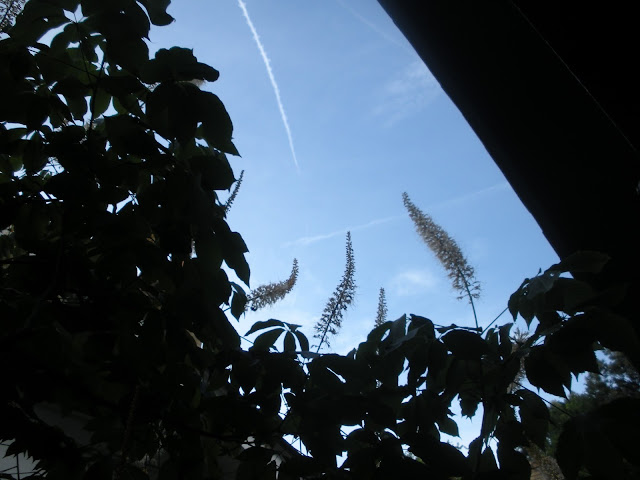The new house on Tutwiler has some surprise vegetation we are discovering. There is a pale blue morning glory vine growing on a fence and nearby rose bush.
Chapter 20 in the Tale of Genji is titled Asagao. Genji tries to have an affair with the princess Asagao but is rebuffed.
"He paid a visit to Princess Asagao, whose name meant "the morning glory". Her attitude was very stiff and formal. He came back and lay awake with disappointment. He had the shutters raised early and stood looking out at the morning mist. He broke off a morning glory in the garden and sent it to Asagao with a poem saying, "I wonder if the flower has been taken past its bloom".
 |
| Hiding behind a showy competitor Sept. 6, 2015 |
 |
| The color combination between the green and the violet is very pleasing. |
 |
| After an accident broke this sundial, we left it as our own Greco-Roman ruins. |
The enzyme added came from snapdragon and it converts a chalcone in morning glories to an aurone, a bright yellow pigment. The basic scaffolds of these molecules are shown here.
see this link
Another plant in the same genus is Ipomea batatas. This is the sweet potato. Not unexpectedly the flowers look very similar.
 |
| Sweet potato flower |





































































